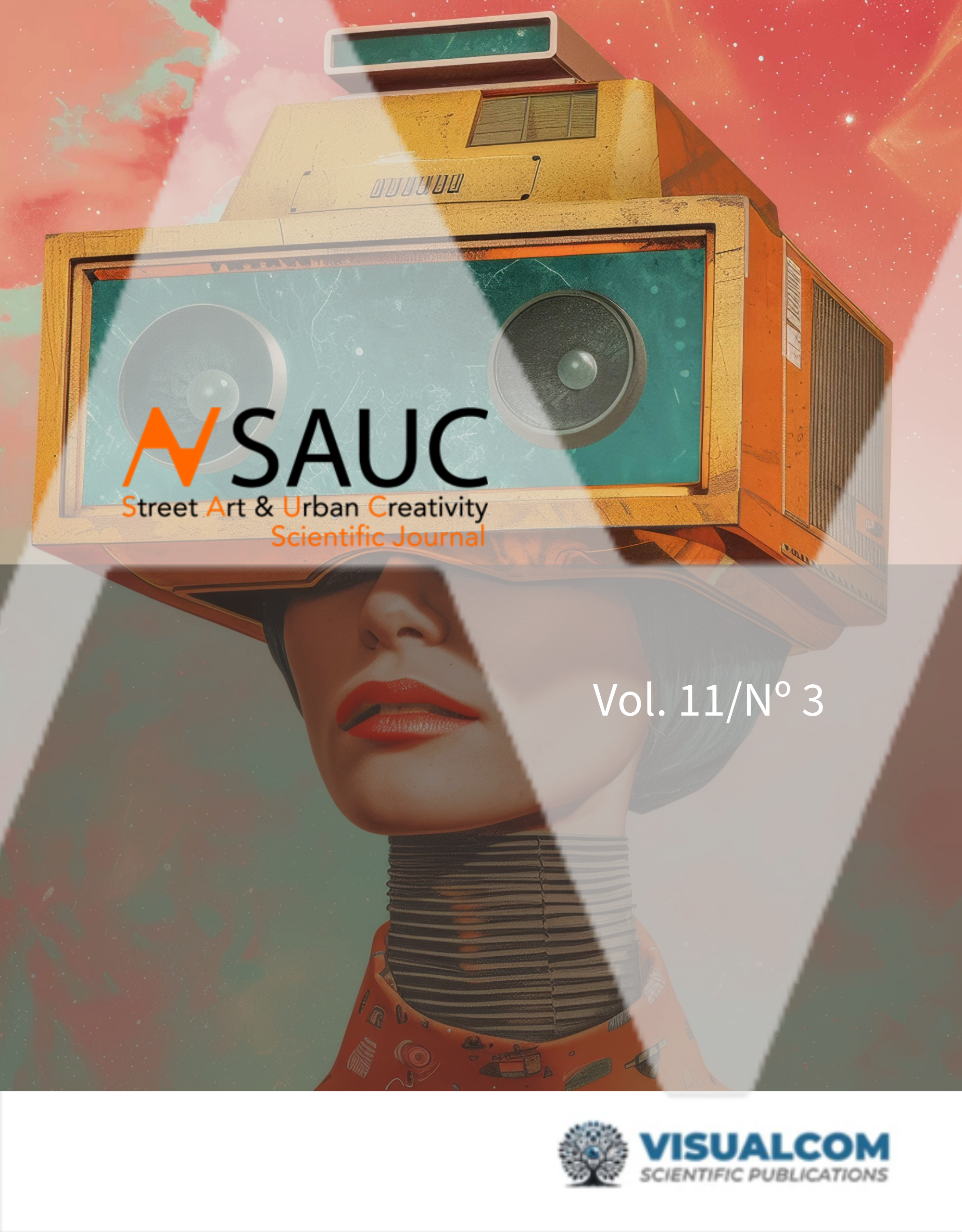Social networks and gamification as transformative communication tools
Tourism and the pandemic
DOI:
https://doi.org/10.62161/sauc.v11.5744Keywords:
Redes Sociales, Gamificación, Pandemia, Turismo, Apps, Comunicación, MarketingAbstract
The pandemic, particularly during the period of confinement, has marked a turning point in digital transformation across nearly all areas of business and knowledge. The tourism sector serves as a prime example. Although in-person visits to emblematic locations in each country were not possible, new avenues have opened up to bring the world of tourism and the prosumer closer together (Toffler, 1980). Gamification (Teixes, 2014) has played a decisive role in this process. Through apps and virtual and immersive communication techniques, the connected user has been able to discover information about many of the places they have longed to visit in a tangible way. Therefore, it could be argued that tourist destinations themselves have recognised technology as a tool to enhance engagement with their future visitors.
Downloads
Global Statistics ℹ️
|
417
Views
|
230
Downloads
|
|
647
Total
|
|
References
Bauman, Z. (2017). Tiempos líquidos. Tusquets.
Berganza, M.A, & Ruiz San Román, J.A. (2010). Investigar en comunicación. Guía práctica de métodos y técnicas de investigación social en comunicación. Madrid: McGraw Hill.
Byung-Chul, H. (2010). La Sociedad del cansancio. Herder.
Caillois, R. (1997). Los juegos y los hombres: La máscara y el vértigo. Fondo de Cultura Económica.
Caldera Serrano, J. (2014). Realidad aumentada en televisión y propuesta de aplicación en los sistemas de gestión documental. El Profesional de la Información, 23(6), 643-650. http://dx.doi.org/10.3145/epi.2014.nov.12 DOI: https://doi.org/10.3145/epi.2014.nov.12
Carse, J.P. (1986). Finite and Infinite Games: A Vision of Life as Play and Possibility. Sirios 2.
Coller, X. (2000). Estudio de casos. Vol. 30. Centro de Investigaciones Sociológicas.
Csikszentmihalyi, M., & Larsson, R. (2014). Flow and the foundations of positive psychology: The collected works of Mihaly Csikszentmihalyi. Springer. DOI: https://doi.org/10.1007/978-94-017-9088-8
Han, B.-C. (2019). La sociedad del cansancio. Barcelona: Herder.
Han, B.-C. (2022). Infocracia. La digitalización y la crisis de la democracia. Madrid: Taurus.
Haugeland, J. (2001). La inteligencia artificial. México: Siglo XXI.
Hernández Díaz, F. (1996). Metodología de estudio. Como estudiar con rapidez y eficacia. Santafé de Bogotá.
Huizinga, J. (2012). Homo ludens. Madrid: Alianza Editorial.
Hunter, D., & Werbach, K. 82013). Gamificación: revoluciona tu negocio con las técnicas de los juegos. Pearson.
Jenkins, H. (2009). Fans, blogueros y videojuegos: La cultura de la colaboración. Paidós.
Kapp, K. M. (2012). The Gamification of Learning and Instruction: Game-based Methods and Strategies for Training and Education. Pfeiffer. DOI: https://doi.org/10.1145/2207270.2211316
Kawulich, B.B. (2005). La observación participante como método de recolección de datos. Forum Qualitative Social Research, 6(2). https://doi.org/10.17169/fqs-6.2.466
Lavilla Muñoz, D., & Sánchez Franco, V. (2023). Empresa informativa y gamificación en la pandemia. Global Media Journal México, 20(38), 52-70. https://doi.org/10.29105/gmjmx20.38-492 DOI: https://doi.org/10.29105/gmjmx20.38-492
Lavilla, D. & Sanchez Franco, V. (2024). La CNN como eje del periodismo inmersivo en la empresa informativa. European Public & Social Innovation Review, 9, 1–19. https://doi.org/10.31637/epsir-2024-360 DOI: https://doi.org/10.31637/epsir-2024-360
Mc Gonigal, J. 82011). Reality is broken: Why games make us better and how they can change the world. Penguin Press.
Menéndez, S. M. (2022). Perspectiva y método: Multimodalidad, estrategias y recursos para el análisis discursivo. En Acebal. M.M. (Ed.), Entre retóricas: diacronías, lenguajes y disciplinas. (221-224). UNL. http://hdl.handle.net/11336/199480
Morillo, J. P., Daza, N. J. P., & Flechas, E. M. (2015). Componentes y dimensiones de la investigación formativa en ciencias de la información. Enl@ce: Revista venezolana de información, tecnología y conocimiento, 12(3), 48-70.
Newman, G.D. (2006). El razonamiento inductivo y deductivo dentro del proceso investigativo en ciencias experimentales y sociales. Lauro, 12(Ext), 180-205.
Ridley, M. (2014). Qué nos hace humanos. Taurus.
Riesman, D. (1996). La muchedumbre solitaria. Paidós Studio.
Salas, C. Storytelling. (2017). La escritura mágica. Mirada Mágica.
Simons, H. (2011). El estudio de caso: Teoría y práctica. Ediciones Morata.
Sinek, S. (2018). El juego infinito. Empresa Activa.
Teixes, F. (2014). Gamificación: fundamentos y aplicaciones. UOC Business School.
Tejeiro Salguero, R. (2001). La adicción a los videojuegos. Una revisión. Adicciones: Revista de socidrogalcohol, 13(4), 407-413. https://doi.org/10.20882/adicciones.555 DOI: https://doi.org/10.20882/adicciones.555
Thoben, K. D., Wiesner, S., & Wuest, T. (2017). «Industrie 4.0» and smart manufacturing-a review of research issues and application examples. International journal of automation technology, 11(1), 4-16. https://doi.org/10.20965/ijat.2017.p0004 DOI: https://doi.org/10.20965/ijat.2017.p0004
Toffler, A. (1980). La tercera ola. Plaza y Janés.
Van Dijk, T. A., & Mendizábal, I. R. (1999). Análisis del discurso social y político. Editorial Abya Yala.
Downloads
Published
How to Cite
Issue
Section
License
Copyright (c) 2025 Authors retain copyright and transfer to the journal the right of first publication and publishing rights

This work is licensed under a Creative Commons Attribution-NoDerivatives 4.0 International License.
Those authors who publish in this journal accept the following terms:
-
Authors retain copyright.
-
Authors transfer to the journal the right of first publication. The journal also owns the publishing rights.
-
All published contents are governed by an Attribution-NoDerivatives 4.0 International License.
Access the informative version and legal text of the license. By virtue of this, third parties are allowed to use what is published as long as they mention the authorship of the work and the first publication in this journal. If you transform the material, you may not distribute the modified work. -
Authors may make other independent and additional contractual arrangements for non-exclusive distribution of the version of the article published in this journal (e.g., inclusion in an institutional repository or publication in a book) as long as they clearly indicate that the work was first published in this journal.
- Authors are allowed and recommended to publish their work on the Internet (for example on institutional and personal websites), following the publication of, and referencing the journal, as this could lead to constructive exchanges and a more extensive and quick circulation of published works (see The Effect of Open Access).













